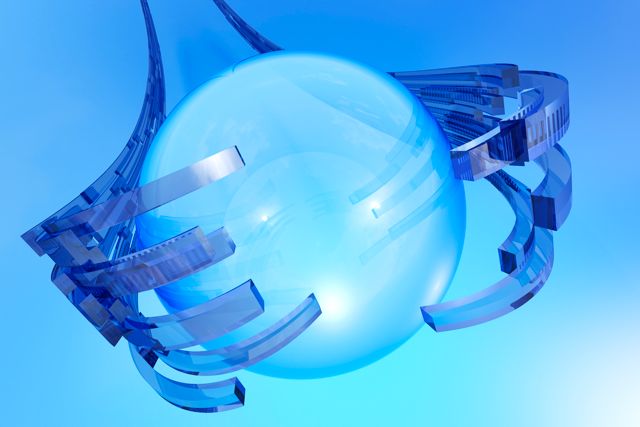A magazine where the digital world meets the real world.
On the web
- Home
- Browse by date
- Browse by topic
- Enter the maze
- Follow our blog
- Follow us on Twitter
- Resources for teachers
- Subscribe
In print
What is cs4fn?
- About us
- Contact us
- Partners
- Privacy and cookies
- Copyright and contributions
- Links to other fun sites
- Complete our questionnaire, give us feedback
Search:
Touch the air
by Peter McOwan, Queen Mary University of London

Air is quite useful stuff, but we tend to think of it as light and fluffy, rather than sharp and pointy. Researchers at Bristol have found a way to create shapes out of thin air that we can actually feel.
Sound occurs when waves of pressure move through the air. Normally these waves have low power, like conversation or music. It takes the clever delicate structures of our inner ears to detect them. Our ears convert the waves into brain signals that let us hear. Really loud sounds, high intensity pressure waves, can actually be felt too. Pressure receptors in our skin can pick them up. Hearing an aircraft take off or being at the front at a rock concert both sound and feel loud. It's like being hit by a big wave. Listening to sound this loud for long can cause hearing problems precisely because our ears are fragile so that they can pick up the normal sounds.
So, is there a form of sound powerful enough to be felt by the pressure sensors on our fingers but safe? To allow us to feel shapes, it needs to be precise enough that different parts of the air next to each other feel different, just like pixels in a picture change colour from place to place.
The breakthrough for the Bristol team came when they created a small grid of tiny sound cannons able to launch their signals under computer control. The sound they use is ultrasound: sound at a frequency high above what the human ear can detect, so it does no harm. It has lots of uses like creating medical scans - that picture of your baby sister or brother in the womb was taken using ultrasound. Ultrasound can also clean dirty jewellery, shaking off the grime. At the right level the pressure that it creates in the air can be felt by our fingers.
Using their ultrasound array the Bristol researchers can produce pressure patterns in the air that make it feel like you are touching an actual object: a cone or a sphere, for example. It's still early days but they hope to combine this haptic, touch interface with augmented reality. Graphical objects will be placed into the scene in the field of view of people wearing a special head visor. Once it works, we will be able to both see and touch objects that only really exist in the memory of a computer. The feel will seem real thanks to the right sound in the right place.


